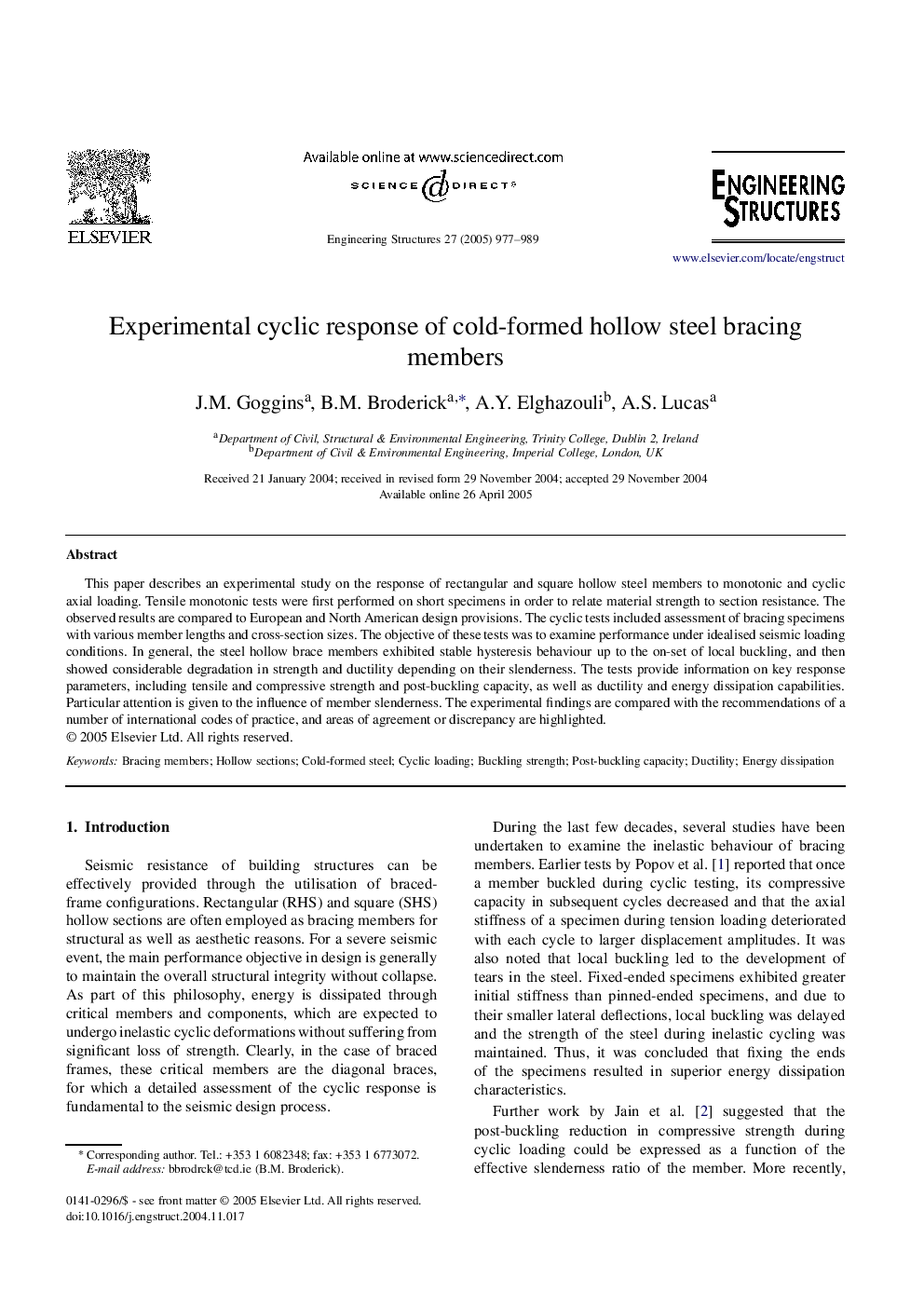| Article ID | Journal | Published Year | Pages | File Type |
|---|---|---|---|---|
| 10287107 | Engineering Structures | 2005 | 13 Pages |
Abstract
This paper describes an experimental study on the response of rectangular and square hollow steel members to monotonic and cyclic axial loading. Tensile monotonic tests were first performed on short specimens in order to relate material strength to section resistance. The observed results are compared to European and North American design provisions. The cyclic tests included assessment of bracing specimens with various member lengths and cross-section sizes. The objective of these tests was to examine performance under idealised seismic loading conditions. In general, the steel hollow brace members exhibited stable hysteresis behaviour up to the on-set of local buckling, and then showed considerable degradation in strength and ductility depending on their slenderness. The tests provide information on key response parameters, including tensile and compressive strength and post-buckling capacity, as well as ductility and energy dissipation capabilities. Particular attention is given to the influence of member slenderness. The experimental findings are compared with the recommendations of a number of international codes of practice, and areas of agreement or discrepancy are highlighted.
Keywords
Related Topics
Physical Sciences and Engineering
Earth and Planetary Sciences
Geotechnical Engineering and Engineering Geology
Authors
J.M. Goggins, B.M. Broderick, A.Y. Elghazouli, A.S. Lucas,
